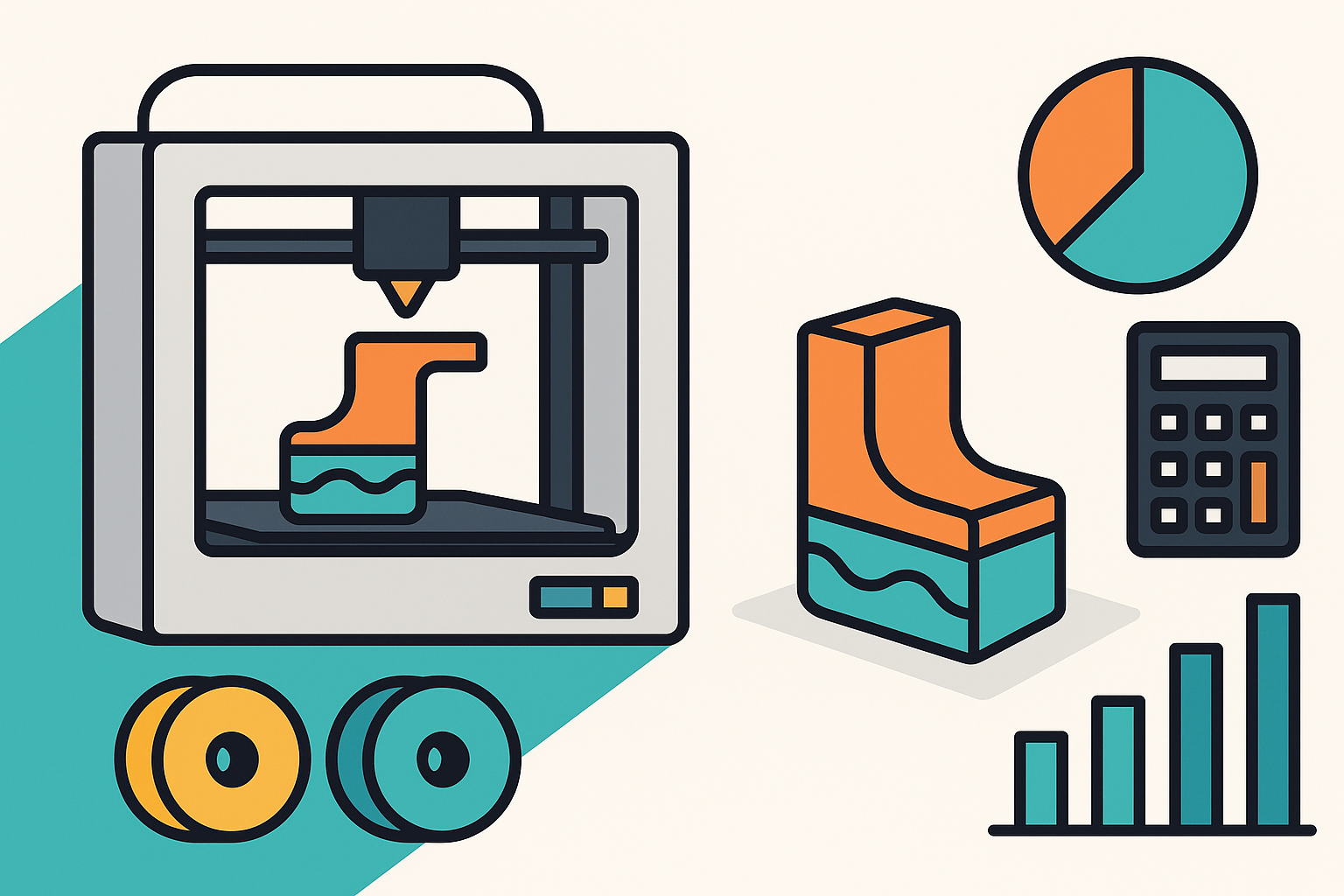What does “multi-material” really mean?
Modern 3D printers—such as Bambu Lab, Prusa with MMU, or other multi-feeder systems—allow printing with different filaments at once. This includes not just colors, but different material types too—like PLA and TPU, PETG and CF-Nylon, or ASA and PVA.
When is it worth combining materials?
- Mechanical function: A strong base from PETG, PC, or PA combined with a flexible TPU layer for shock absorption or sealing is a powerful combo.
- Design and visual separation: Color can highlight key areas, version differences, or guide correct assembly.
- Handles and ergonomic parts: Rigid frame with soft grip zones (e.g. tool handles, holders) offers better usability and comfort.
- Dissolvable supports: Combining your main print material with a dissolvable one (PVA, BVOH) helps with complex overhangs and geometries.
What to watch out for
- Material compatibility: Not all materials bond well. Matching melting temps and chemical adhesion is key. PLA and TPU often work fine; PLA and PC—less so.
- Warping and shrinkage: Materials expand and contract differently—this can cause deformation or layer separation.
- Toolpath complexity: Multi-material prints take longer, need purge towers, and demand precise calibration.
So… when is it worth it?
If you’re just going for color variety, go ahead. But if combining mechanical properties (hard + soft zones), be sure to test compatibility. Dissolvable supports are great for complex parts but add cost. Function-first designs require thoughtful modeling and experience—professional advice is recommended.
Real-world example
One of our favorite setups is a rigid PETG structure with TPU grip zones. We use this in cable organizers, phone stands, and multi-part inserts. Strong where it needs to be—soft where it matters.
Thinking about a multi-material print?
We’re happy to help! Send us your idea or file, and we’ll recommend the best approach and calculate the cost. Get your price estimate now.

